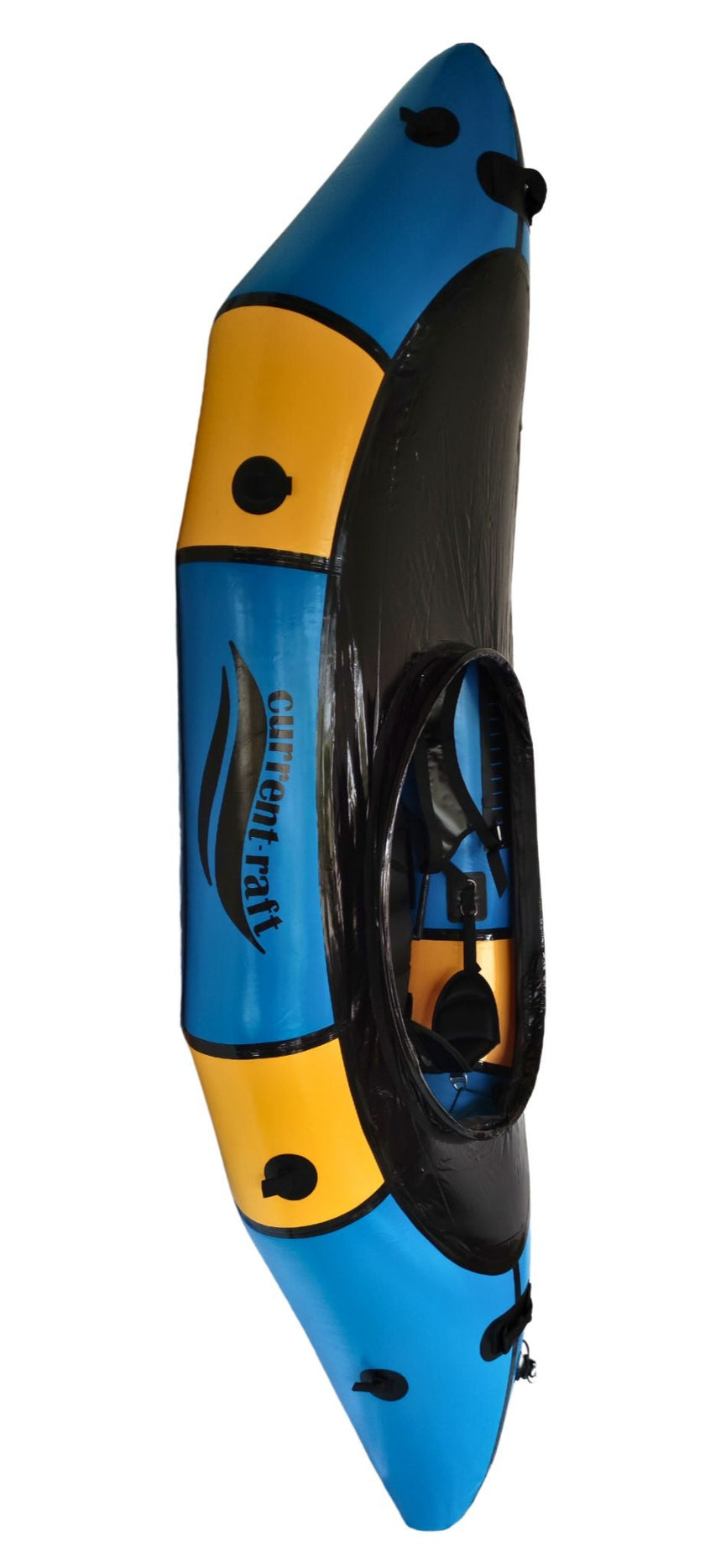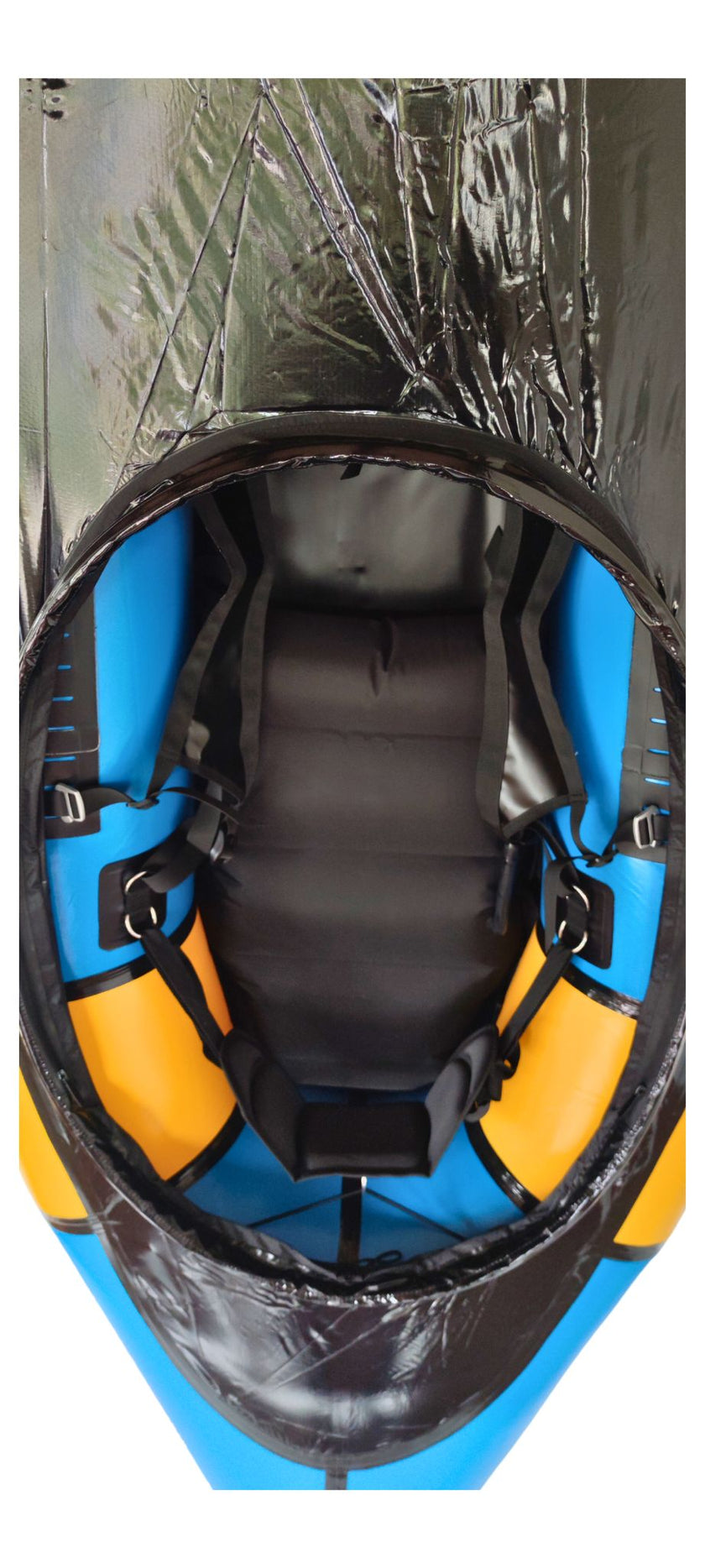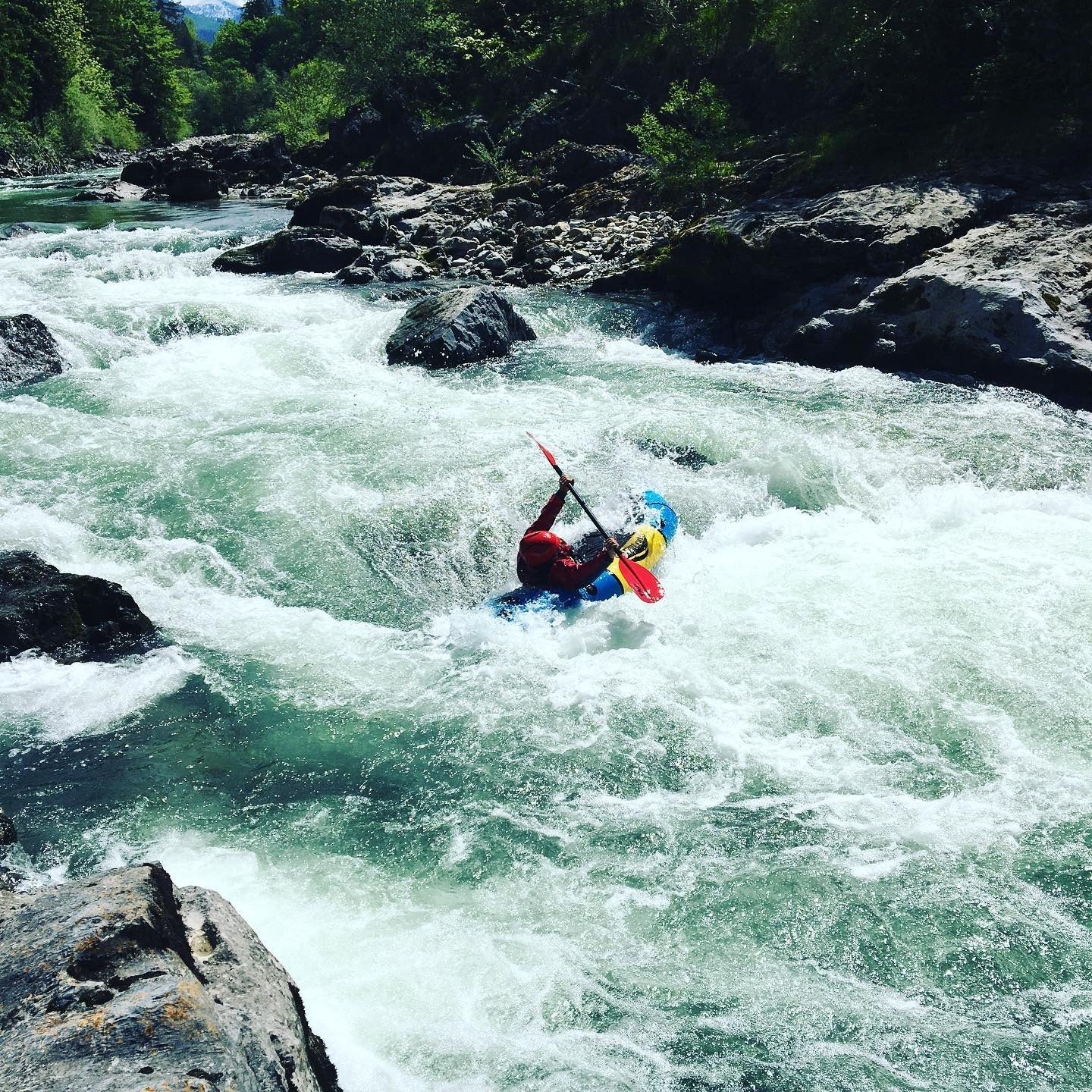Current-Raft Roll
















Description
Do you feel at home in technical whitewater and are you looking for a packraft that has great running characteristics and can be navigated precisely and reliably even in difficult whitewater? With the Current-Raft Roll, you can reliably hit every eddy and can even master the roll in the packraft.
Product information
The Roll is maneuverable and very agile. It can be steered extremely precisely through blocked passages and playfully edged into eddies. It also breaks through larger rollers effortlessly. Wave holes can be cleverly avoided or even booed over. With a little practice, the model can be rolled reliably. It opens up new possibilities in technical whitewater (up to WW4). With a weight of only 3400g, the Roll has extra robust materials built into the tubes and base, and comes with full whitewater equipment as standard. For paddlers with a leg length of less than 107cm, we also recommend a footbrace (190g).
Dimensions
- External length: 255cm or 275cm
- Inside length: 122cm or 142cm
- External width: 94cm
- Inside width: 38cm
- Hose diameter: 28cm
- Load load: 160kg/170kg
- Pack size (approx.): 25l/28l
- Hatch size: 45cm x 83cm (255cm)/ 45cm x 90cm (275cm)
Weights (sorted by length)
- Packraft 420D hoses/840D base: 3350g/3800g (including coaming, fasteners, valve)
- Backrest: 105g
- Thigh straps (aluminum fasteners): 250g
- Seat: 290g
- Spraying apron: 320g
- Inflation bag: 140g
- Carry bag (optional): 300g
- Fin (optional): 130g
- Footbrace (optional): 190g
- Bow bag 40l (optional): 450g
Materials
- Tube material: 420D TPU nylon (0.45mm) with urethane coating
- Bottom material: 840D TPU nylon (0.65mm) with urethane coating
- Seams: 840D TPU nylon
- Valve: Dual function, non-return valve made of PVC
Attachment points
- Handle at the stern
- Handle on the bow
- 4 fastening loops at the rear
- 4 fastening loops on the bow
- Brackets for thigh straps and backrest are pre-installed.
Scope of delivery
- Packraft
- Coaming
- Inflation bag
- Seat
- Backrest
- Thigh straps
- Spray apron
- Repair patches
- Footbrace (optional)
What length do I need?
The decisive factor for the correct packraft length should be the length of the paddler's legs. This is best measured while sitting. To do this, sit on the floor against a wall in a comfortable paddling position and measure the distance from your tailbone to your heel. Remember that clothing and paddling shoes affect your measurement by a few centimeters, or measure directly in paddling clothing. For good contact and control over your packraft in the water, you should fill the interior length as much as possible. This is particularly important in whitewater in order to be able to exploit the full potential of the whitewater packraft models. For smaller paddlers with a leg length of less than 107cm, we recommend an additional footbrace. Of course, the possibility of extra storage space in the bow can also lead to a decision for a longer packraft.
We are happy to advise you on this at any time.
Product information
- We recommend using the Inflation bag to inflate and applying the remaining pressure to the packraft with your mouth. This procedure ensures sufficient pressure in the tubes and protects the material. If a pressure pump is used for inflation, we recommend not exceeding the pressure of 0.08 bar or 1.2 PSI.
- The packrafts can be used without restrictions in salt water or chlorinated pools. In this case, however, you should make sure to rinse off any salt or chlorine residue thoroughly before storing.
- The packrafts should always be stored dry and dust-free. The latter is especially important when using a TZIP storage system. A dry, well-ventilated room without direct sunlight is best for storage. After you get home from your paddling trip, let your packrafts dry thoroughly when inflated. Pay particular attention to moisture between the edges. The packraft can be rolled or folded very small without causing any damage. The coaming can also be double wrapped and put together without any problemsbe cornered.
- The zipper on the packraft (if available) or bow pocket requires regular care and should always be well lubricated to ensure smooth opening and to avoid damage caused by strong pulling. We recommend environmentally friendly greasing with our beeswax stick or a comparable product. In addition, the zipper should always be stored dust-free and without kinks.
- To avoid overinflation, the packrafts should never be placed on land in the sun for a long period of time. After removing it from the water, it is always advisable to let some air out of the packraft. The same applies to any inflatable equipment.
- After paddling, sand and small stones should be completely removed from the inside of the packrafts. In particular, the transition area between tubes and ground, as well as tubes and spray deck, should be kept free of dirt in order to avoid friction and damage in the long term.
Safety instructions
- Non-swimmers do not belong in a packraft. Anyone who takes non-swimmers out on the water carries a high risk.
- If possible, do not paddle alone. Always leave where and until when you plan to travel.
- Take water sports and safety courses with certified trainers.
- Inquire about the dangers of the water - water levels, ebb and flow, currents, weirs and weather conditions. We strongly advise against driving during floods.
- Avoid weirs, power stations and dams of all kinds. There is often a danger to life here, so it is recommended to carry them over a wide area.
- Take first aid and rescue equipment with you on the water.
- Wear clothing appropriate for the weather. Cold weather and water can cause hypothermia.
- Assess your ability correctly and plan tours according to the weakest group member.
- Keep your distance from other water users, especially all motor ships and sailing vessels. Packrafts almost always have to give way and are difficult to see by the skipper.
- Observe the inland waterway and sea shipping regulations. They apply to all shipping lanes and canals and contain binding rules for all watercraft.
- Put on a life jacket or, on large bodies of water, a fainting-proof life jacket and head protection. When whitewater rafting, wear a cold-weather suit and a helmet.
- Particular dangers exist on white water and on the coast. These waters can only be navigated with special equipment and by experienced paddlers, ideally with expert guidance and local guidance.
- The emergency exit from the packraft should be practiced. We recommend practicing quick exits on land, in the pool or under supervision.
- In the event of additional modifications to the packraft, getting in and out must not be impaired.
- Getting back on the water should be mastered safely before navigating open water or white water.